Scott Holthaus – Moving Light
Posted on November 7, 2023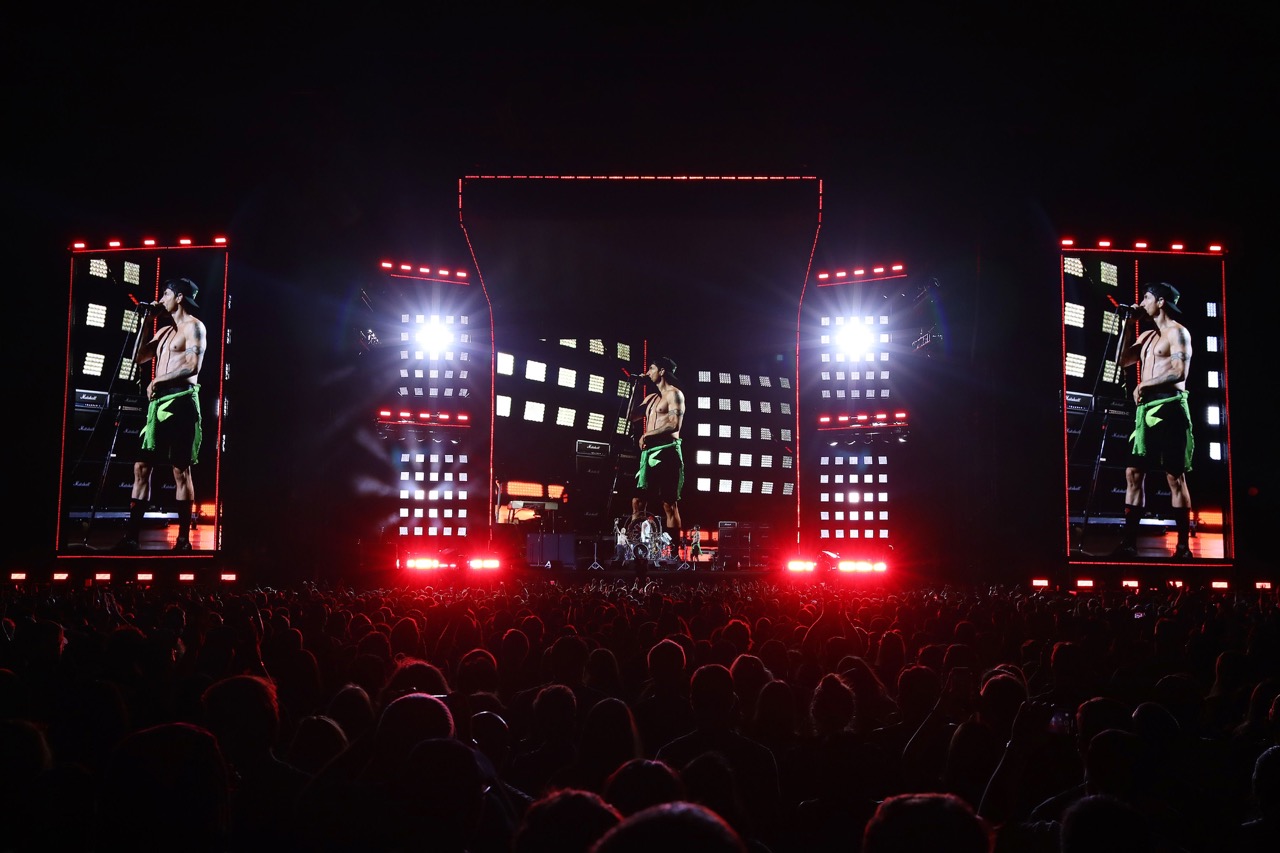
Photo: TODD KAPLAN
Creativity is always in motion. The willingness to move with its relentless flow is what spells the difference between art and imitation. Like a long line of creatives in every field before him, Scott Holthaus has embraced this principle to its core. Following it has helped him take his lighting designs to bold new places for longtime client The Red Hot Chili Peppers, as well other bands like Disturbed and Alice In Chains.
Never allowing himself to become overly comfortable in his approach to design, Holthaus is constantly reevaluating the technologically he employs in his work. Regardless of its power, every tool, be it a video wall, pyro effect, or lighting fixture, has a limited creative shelf-life. Once the looks he can coax out of a tool become too familiar and predictable, it is time to set it aside, at least temporarily, and explore new alternatives. Without this fluidity, how else can a designer’s work retain its sense of vibrancy and surprise?
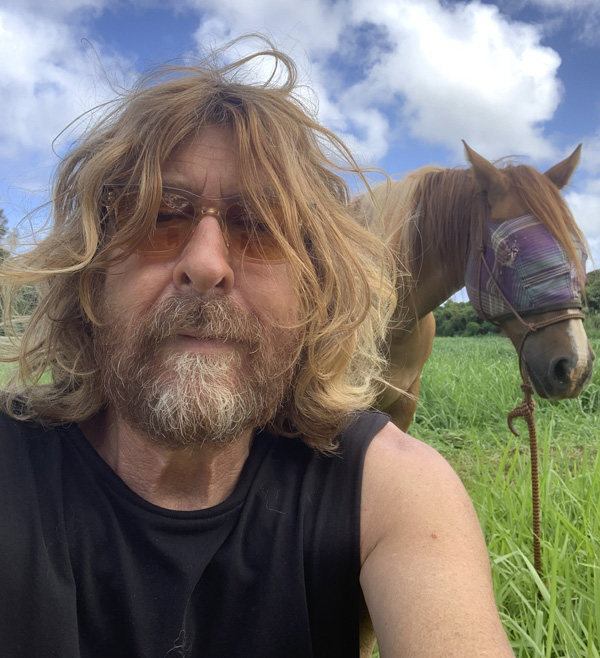 Seeing beyond individual tools, gives Holthaus a clearer view of the more elusive moods, shapes and forms that endow a design with its power to connect to people. Design, he likes to say, is never about technology for technology’s sake. There is always a deeper meaning. He recalled being struck by this epiphany when coming across a simple community stage while on a walk in Italy years ago. It has remained with him ever since, even as he’s worked on massive projects, like the one he did for Red Hot Chili Peppers in 2016 involving over a thousand fixtures on automated hoists.
Seeing beyond individual tools, gives Holthaus a clearer view of the more elusive moods, shapes and forms that endow a design with its power to connect to people. Design, he likes to say, is never about technology for technology’s sake. There is always a deeper meaning. He recalled being struck by this epiphany when coming across a simple community stage while on a walk in Italy years ago. It has remained with him ever since, even as he’s worked on massive projects, like the one he did for Red Hot Chili Peppers in 2016 involving over a thousand fixtures on automated hoists.
Regardless of the size and complexity of a production, though, movement invariably lies at its heart. In Holthaus’ view, that is the one constant of a successful creation. He explained this and more, as we discussed the power of movement in design.
You have used video walls in so many ways, including when you did that dramatic generative video spill for Red Hot Chili Peppers last year. Yet on the recent Disturbed tour, you avoided using a center stage video wall and created a stunning backdrop with lights, automations, and pyro. Can you tell us why you moved away from a video wall?
“I was walking to rehearsals in Florence years ago, when I passed by an outdoor stage for a community theater/opera. It was all white just simple whitewashed wood, maybe pallets? With a white tree in the center. It was a revelation. I was trying to figure out how to make my automated video not look as stale and predictable as it was looking, and this scene made me think that technology, for the sake of technology, was not only beat to death, but also a giant toss. I started looking for shapes. not tech. I still do that to this day.”
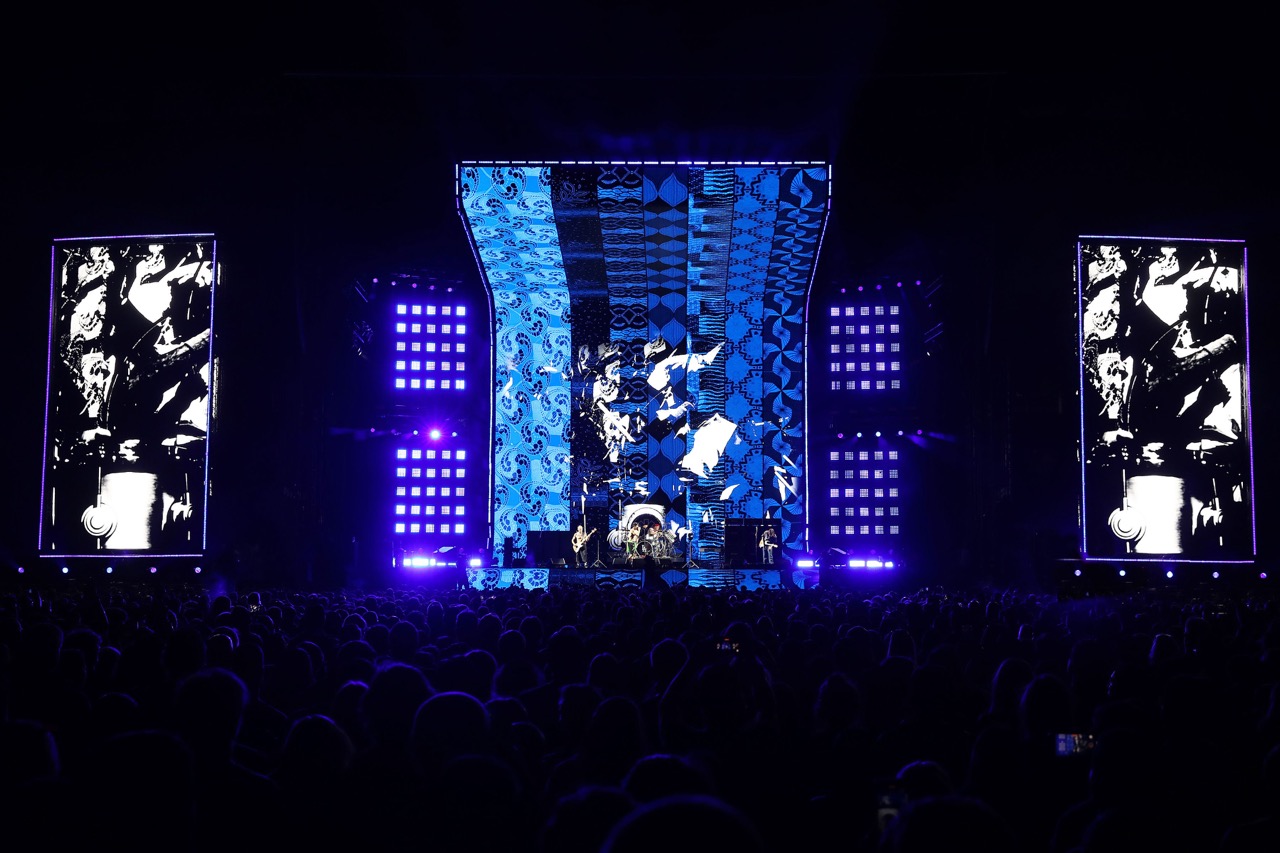
Photo: TODD KAPLAN
Looking ahead do you think we’ll see more designs without center stage video walls?
“Shoots! I don’t hate video!! I just feel gigantic 2D TVs don’t inspire people anymore, as their mind-bending content tap has run out. Of course, festivals need a generic surface so twenty bands can do their thing in front of something.”
One more about video — it has played such a critical role in design. So, how does going without a video wall impact the way you use lighting? In other words, are there certain types of things that you have to make sure lighting does when you have a show without a center wall?
“Let’s simplify. Perfect lighting is still lights. When I was a kid, we would go see shows and the takeaway was almost always the ‘gag,’ or the scenic. Pink Floyds wall, Dio’s laser whip. It holds true today, ask anyone about Travis Scotts huge Noggin. I’ll remember that. I guess what Im saying is people take away memories of an event not by squiggly imagery, or moving flashing lights, but through tangible things.”
We mentioned the automation in your Disturbed design. Back in 2016, you attracted a lot of attention throughout the industry by creating RHCP design that involved over a thousand lighting fixtures on moving truss. That was virtually unheard of at the time. Why do you like automation so much?
“Funny, I was just bashing automation but I do use it a lot. I think the trick with it is to use motion for fluidity and to alter perspective. Disturbed’s writhing flaming trusses or the thousand RHCP hoists didn’t just move to show off technology, but simulated organic motion and hopefully alter the viewers sense of space if im lucky.”
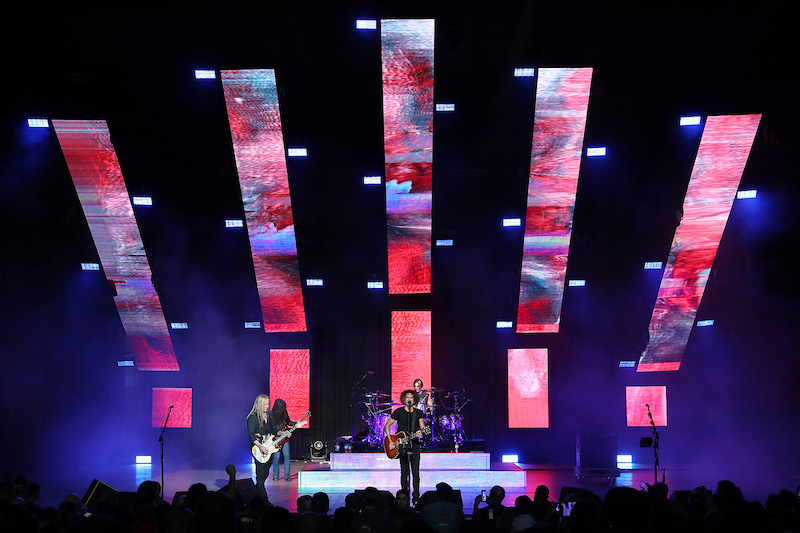
Photo: TODD KAPLAN
You also combined automation with pyro on your recent Disturbed tour. How difficult was that? Also, on that subject, you like to mix different tools and techniques in your designs. It keeps them refreshingly interesting. What advice can you offer about not getting into a “design rut?”
“I saw a Frank Gehry (architectural) exhibit in Bilbao and it showed what Frank gave to his design team; it was basically some sharpy squiggles on recipe cards. I could imagine him handing that single sheet to his engineers and saying ‘make the Guggenheim Museum.’ I kind of do the same thing. I hand Narci Martinez (RHCP PM) a napkin, and he creates a way for it to be born. I give Ken Mitchell (Disturbed PM) a comic book picture, and he figures how to safely distribute a thousand pounds of gas through two hundred feet of articulating truss. I’m always in a rut. I don’t have a single idea in the can waiting for an artist. I usually find the Spark of an idea far from the stage. nature , architecture. art. That is where I steal.”
You may say you’re always in a rut, but from our perspective, you’re always pushing the envelope. So, do you envision AI having an impact on your work?
“It’s inevitable. But I do see it following earlier disruptive tools. I was wowed by a ballyhooing light at a Police show in the early eighties and blown away by U2’s massive video wall but of course, as time went by all of these tools have become mundane. So will AI. Im still dreaming of a whitewashed tree in Italy.”
You worked closely with Leif Dixon on the RHCP tour that we mentioned earlier. What’s the key to successful creative collaboration?
“I have been credited with a bunch of cool looks that Leif came up with. He is a perfectionist Im a slacker He understands technology, I drive a fifty-year-old pickup, and an eighty-year-old motorcycle. We have a special language with lots of stupid words like ‘pepper’ for broken up jaggedly erratic; ‘fuzz’ for fade time duration; ‘dirt’ for CTO; ‘headlights’ for CTB’ and ‘baloney’ for just that, baloney color.”
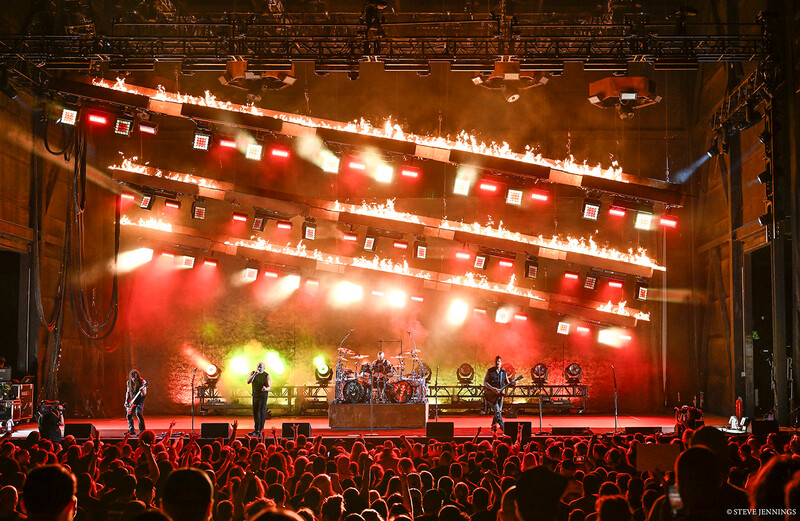
Photo: STEVE JENNINGS
You’ve been RHCP’s designer since 1999. What’s the best thing about working for that great band?
“I could pinch myself. Every show is exciting — no pro tools, just live music. Im so proud and honored to be with them. It is a part of my identity.”
How did you hook up with RHCP?
“In 1997 I was rehearsing Janes Addiction. Flea was playing with them. His tech, Louie Matthew was new to bass stuff so he asked me to help him replace Flea’s speakers. A blue Makita and ten minutes later we flipped the boxes back up. Not another thought. Come to find out, Louie was TM for Peppers and asked me to be the LD for the Californication tour cycle. Lucky Day!”
Going further back, how did you get started in lighting design?
“In 1982 I was working for a sculptor when my friend got a concussion at a waterslide. He asked me to set up his mashup of steel pars and some Fresnels in a bowling alley lounge. Armed with a milkcrate full of gel and zero experience, I got power from a live panel in the kitchen. and rocked my first cover band rock show. The stoned sound guy told me to start with blue, go to red when it picks up, then to straw or white when it’s hot. Then back to blue. I have been following his advice for years. ”
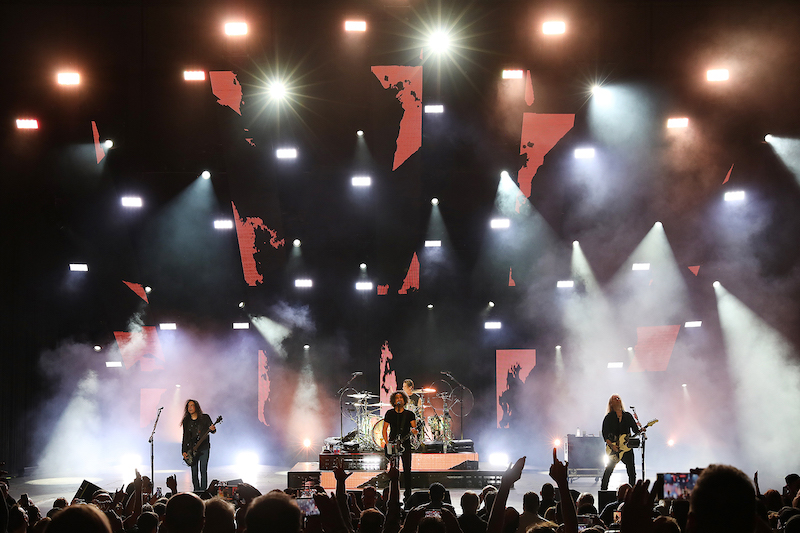
Photo: STEVE JENNINGS
What do you think you would have done if you didn’t become a lighting designer?
“Forrest ranger, or cowboy.”
You’ve done a lot of shows in your career. Is there one that really stands out because of what it taught you about lighting design, or about yourself as a lighting designer?
“Brian Setzer 1999 at some crummy Casino. Hundreds of moving lights — not really Brian. I put them all in dirt and static for the whole show. When He busted into Mancini Pink panther breakdown — giant pink Bally! Then back to static dirt. Maybe the biggest audience reaction I ever had. Remember young people out there — Restraint! Don’t let every look be a jailbreak bally– sooooo Boring.”
What are the three most important personality traits a lighting designer should have?
“First, be cool take others’ Ideas. You are not that great. Second, be nice to everybody, who knows if that bass tech will become a TM with your dream gig. Third, don’t let crappy Ideas from managers, artists or their wives get you down. And as a bonus, number four is this: study as many festival rigs as you can and never do any of it!”
What is the one thing you want people to know about you as a lighting designer?
“Im a good whistler.”
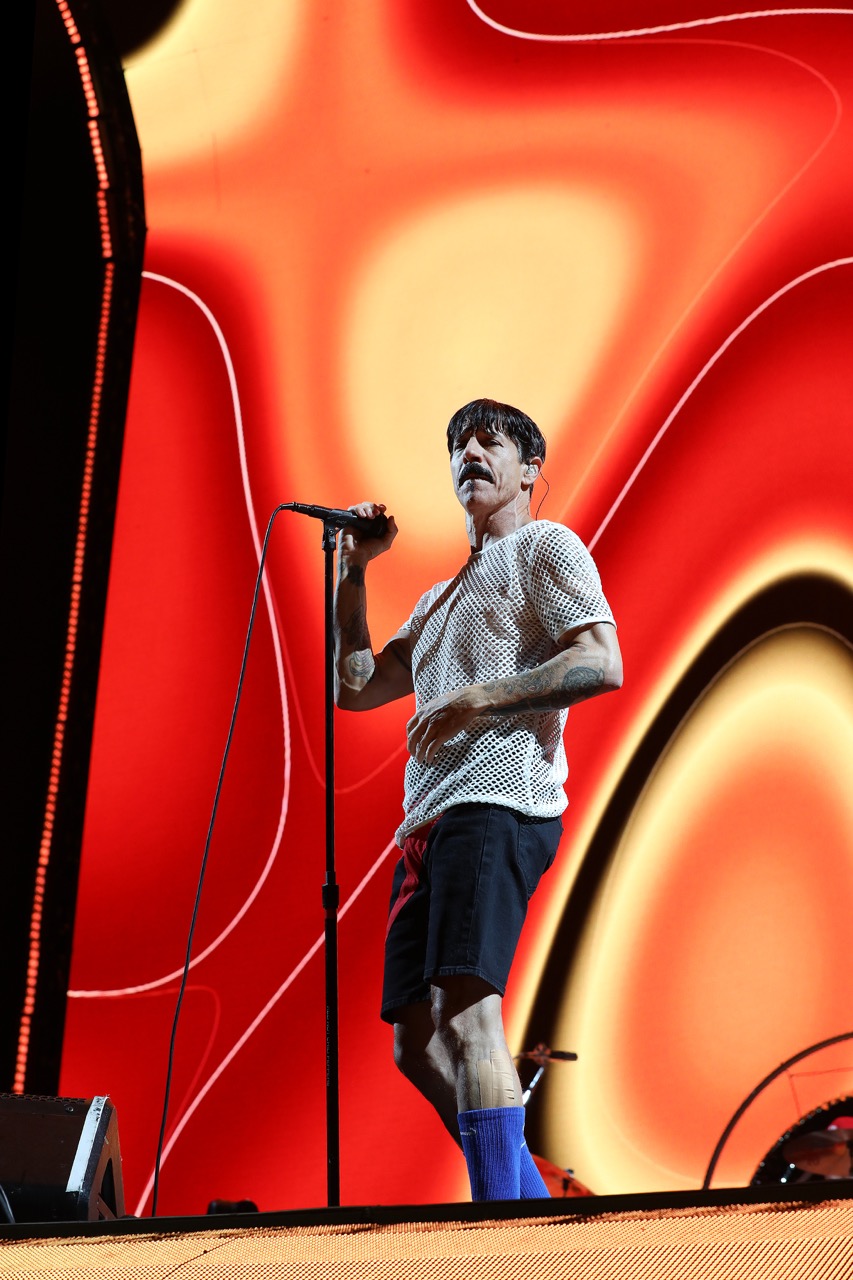
Photo: TODD KAPLAN